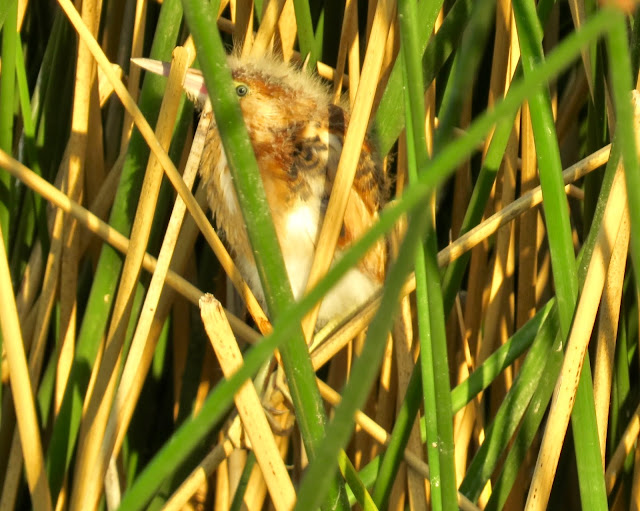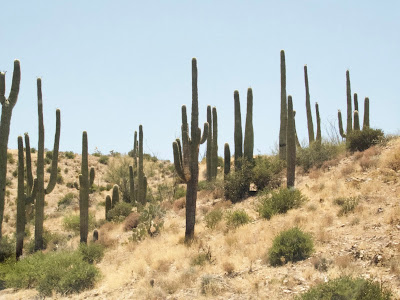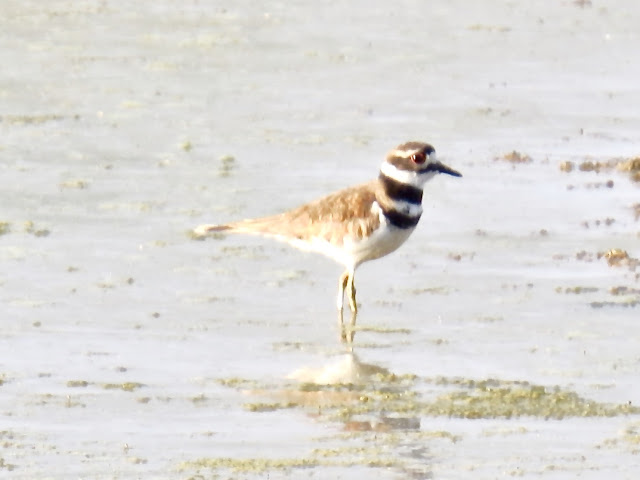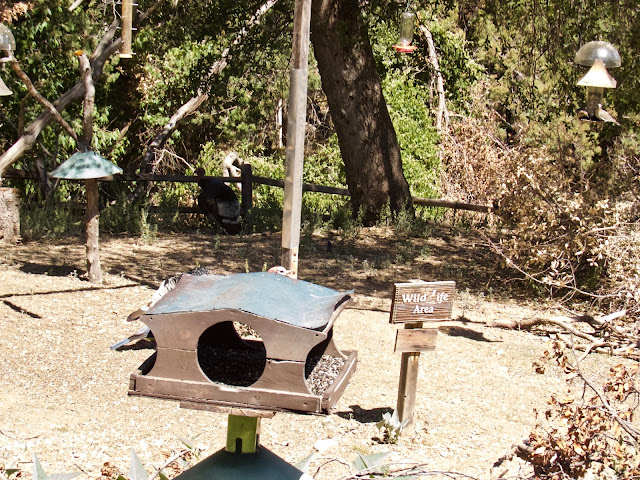Sunday, June 4, 2017 Madera Canyon
Taking my usual leisurely time with breakfast and coffee, I was eager to leave the ozone-filled air of the Phoenix Valley for the fresh air of two canyons in the Santa Rita Mountains.
Located in the Coronado National Forest about 25 miles southeast of Tucson, off of I-19, it’s a trip I’ve done many times. Not hard to love the escape from early summer’s desert heat for that of a mountain canyon even though it’s only about 10°F cooler…noticeable to me.
Arriving at Madera Canyon’s lowest marked trail (Proctor Road) at 8:00 a.m. (Elevation: 4458’), it felt good to stretch my legs and whole body after the three-hour drive south.
Birds were singing. Cottonwoods, oaks, sycamores, willows, mesquite — all the trees were now fully leafed out hiding the singer. A challenging morning of birding was just what I needed. Some expected resident birds were present as were summer visitors like DUSKY-CAPPED, ASH-THROATED AND BROWN-CRESTED FLYCATCHERs.
Desert birds, VERDIN, BLACK-THROATED SPARROW, and LUCY’S WARBLER were easy for me to ID in this desert riparian area. A bright red SUMMER TANAGER tried my patience; I was sure it’s voice was the one hidden behind leaves and ….eventually, it flew out to a distant area in all its full red-feathered glory, confirming my ID.
Finishing up my walk there with a nice prize (rare BLACK-CAPPED GNATCATCHER), I could feel the adrenalin rising.
Next stop: Santa Rita Lodge.
Here, I sat among other birders viewing a wide bird-feeding area filled with covered platform seed feeders, suet feeders, peanut-butter log feeders, numerous hummingbird feeders and piles of limbs and brambles for the ground-loving birds that search for insects and bugs to add protein to their diet, especially if they’re feeding young.
An ACORN WOODPECKER worked the peanut-butter feeder.
WILD TURKEYs (8 total) found their way to the water fountain feature crowding out most other birds temporarily.
 |
WILD TURKEY
|
Not super crowded with birders for a Sunday morning, most all of us arrive here to view the hummingbirds.
 |
| BROAD-BILLED HUMMINGBIRD |
 |
| In silhouette, same bird as above: BROAD-BILLED HUMMINGBIRD |
BLUE GROSBEAK (3 of them) worked the ground near the brush piles. What a nice splash of blue on the dirt.
 |
| BLUE GROSBEAK |
The next bird ticks me off. Pete Dunne calls it the "Parasitic Blackbird". It's in that family but goes by the name: BROWN-HEADED COWBIRD. The following photo is not of the male for whom the species is named (a black bird with a brown head) but its mate: a female, a pale nondescript bird.
 |
| FEMALE BROWN-HEADED COWBIRD |
Why do I dislike her? She lays her eggs in other birds' nests for them to incubate and raise. That's not only weird. Suppose you're raising two infants and two or three more are added to your task. The nesting couple doesn't differentiate the eggs; then feeds the interlopers along with its own, wearing themselves out and risking the lives of their own offspring. Nasty bird!
My favorite sighting at Santa Rita Lodge was the ARIZONA WOODPECKER, seen more often in forests than down in the desert. A brown-backed woodpecker, the photo below is of a juvenile male with some red feathers on the top of its head.
 |
| Arizona Woodpecker at a peanut-butter feeding station |
Driving, then, a bit farther up the road to Kubo Cabins B&B, Cora called out to me as soon as I arrived. Offering a more intimate experience with the birds along the low hills of a mountain stream (now dry, of course), it's a place I always visit. Birds did not disappoint!
 |
| Female BLACK-HEADED GROSBEAK |
 |
| MALE BLACK-HEADED GROSBEAK |
BLUE GROSBEAK were here, too.
 |
| Male BLUE GROSBEAK |
The BROAD-BILLED HUMMINGBIRD perched on a wire after filling up (at least somewhat) at one of the feeders.
 |
| BROAD-BILLED HUMMINGBIRD |
A WHITE-BREASTED NUTHATCH decided the suet feeder was a perfect spot to land.
Even the ordinary HOUSE FINCH looked rather spectacular here in the woodsy riparian area.
Two birds gave me quite a thrill. The first was the presence of VARIED BUNTING, a bird I rarely see for long periods of time. Usually, when spotted, they take off. Here, it showed its awareness of me across the stream on Cora's viewing deck, but was too busy eating to stop. Thus, my first decent photos of this very colorful bird.
How about that palette of color! And, as you can see, the Grosbeak is well-named.
What do you do when a MAGNIFICENT HUMMINGBIRD stops directly in front of your face hovers within 3" there momentarily -- with my eyes seeing mostly its very green throat -- before flying off to a feeder?! WOW!
It had buzzed past me one other time and I think it may have stopped to read all those buttons on my hat!
In any event, it gave me goosebumps. Thrilling, indeed.
Good photos of that bird are difficult at all times, but on this day, I got my best ones ever. Even they do not do justice to this large hummingbird that is so much bigger than the others at the feeder, that about a quarter of its body extends beyond the feeder.
 |
| MAGNIFICENT HUMMINGBIRD (above and below at feeder) |
Having been birding since I arrived at 8 a.m., I decided to check into my room at a new location up in Sahaurita (Vagabond Executive Inn).
Later, I returned to Madera Canyon to listen for owls up on the Carrie Nation Trail where, instead of standing at the Lodge and listening for them calling from wherever in the woods, I preferred being closer to them.
With a three-quarter full moon, the parking area at the trail head (5400' elevation) was light enough at 8 p.m. that I was able to watch two MEXICAN WHIP-POOR-WILL fly overhead. Had never seen it fly before. Its thick body, stretched out in flight, was carried through the night with wide floppy wing strokes. I assumed it was heading to roost.
As the sky darkened, I headed up the trail using my big light on the dirt road so I wouldn't trip over any protruding rocks. Once in place near the bench, I just stood and listened. Didn't need any playback. First a MEXICAN WHIP-POOR-WILL, somewhere close behind me in the forest, called just the whip part of its call but soon went all the way, over and over again with a reasonable pause in between. Whip-poor-will....whip-poor-will....... Ah! An answer came from another part of the forest, or perhaps, just another bird getting started: Whip-poor-will...over and over...music to my ears. The one behind me might have been breathing down my neck.
Before long, the WHISKERED SCREECH OWL added to the evening's symphony. The first one I heard sounded like it was coming from a lower elevation. Woot woot woot woot woot woot. Described as a telegraphic trill, its rhythm was steady...not wavering...not changing its note or pitch...just that same series of WOOT notes - maybe five or six at a time. Soon, one closer to me began to WOOT WOOT WOOT WOOT WOOT.
Wrapped in the sound of owls, I returned down the Carrie Nation Trail, to the car, and off to bed.
Monday, June 5, 2017 Florida (flo-ree-da) Canyon
Knowing Chris Rohrer had a longer drive than I did, I didn't want to be late to our meeting spot but he had arrived before me.
This was my first birding expedition to Florida Canyon this year. It's a nifty place, but moderately difficult to hike upwards on a narrow stony trail trying to bird at the same time. Ocotillo and various cactus (prickly pear, sotol, yucca) and mesquite trees thrived on the barren hillsides. Closer to the stream, sycamore, willow and cottonwoods gave cover to the many birds that were there.
Almost immediately, I heard the somewhat melancholy song of the DUSKY-CAPPED FLYCATCHER. Chris has a great ear and began naming other birds around us as he led the way up the trail through the hillsides on each side of the stream to our right, now dry.
After a particular tough spot to climb over some big rocks, Chris said, "That's the worst of it." Ha! He had to say that two more times, at least!! Dressed appropriately in hiking boots, sun and insect-protective clothes with my usual wide-brimmed hat and lots of water, I was prepared for both the steep trail and the heat as the morning progressed.
We walked up beyond the dam to the end of the maintained trail and back. At a spot where I could pause with both feet side by side, I looked up and was trying to confirm an ID of an apparent Turkey Vulture. Chris caught on to it and together, we said, ZONE-TAILED HAWK. Note the bi-colored wings of the Zone-tailed that look so much like the Turkey Vulture. The bands on the tail give the "Zonie" away to birders. To small prey on the ground that don't note its slightly smaller size, they think the hawk is a non-threatening vulture. Slyly, cleverly, the Zone-tailed Hawk feeds well with a dive out of a kettle of Turkey Vultures to get its talons into a very surprised smaller bird or vole on the ground.
 |
| ZONE-TAILED HAWK Photo: Chris Rohrer |
Many of the birds were easily identified with binoculars but were quite distant for my camera, but I managed a few when I could stand firmly. A distant young male BLUE GROSBEAK was perched high.
 |
| BLUE GROSBEAK -Juvenile Male |
In a bit over 2.5 hours, we located 45 species of birds that I just don't see on a regular basis, so it felt extra sweet to be finding NORTHERN BEARDLESS-TYRANNULET; PACIFIC -SLOPE FLYCATCHER; BROWN-CRESTED FLYCATCHER; WARBLING AND BELL'S VIREO; BUSHTITS; BRIDLED TITMOUSE; CANYON, CACTUS and ROCK WRENS; HOODED ORIOLE, warblers, tanagers, buntings, and more.
The bird we both wanted to see was a small beautiful warbler, the RUFOUS-CAPPED. Knowing its song well, Chris located the site of its potential nest in a dense thicket of shrubs, vines and small trees. From its original chip call, the male began using its agitated warning. That confirmed a nest and we knew enough to let the birds alone...we had both seen the bird previously and had just confirmed its chip and it agitated series of chips with playback.
On the way down, I took time to snap a photo of this dragonfly that I think might be a FLAME SKIMMER. Those of you who know your "flies", set me right if I've missed identified it.
eBird link for our time in Florida Canyon:
http://ebird.org/ebird/view/checklist/S37410073
After a brief rest stop at the La Pasada shops, Chris caught sight of a GREATER ROADRUNNER just before we reached the 4-way stop. I quietly got out of the car but the bird ran across the street. Didn't want it to do that so I headed back to the car. But had to stay long enough to enjoy its perch.
 |
| GREATER ROADRUNNER running across the street to the median |
 |
| Hopping to the top of the rock, it looked like a statue! |
It was still early enough to head farther south to De Anza Trail-Tumacacori in Santa Cruz County to search out the nesting ROSE-THROATED BECARD. Arriving at 10 a.m., the temperature was taking its toll. We walked slowly on this portion of the long trail that was new to me. Since birders from all over the state would be coming to see these rarities, someone had hung pink ties at the turn points in the trail.
Two birders were present when we arrived: one who had driven over from New Mexico; one from Tucson with a very good spotting scope. The nest of this bird is amazing. Last year's nest (no one knew it was there last year) was on our side of the river and appeared to hang like an orioles nest but about a foot long. This year's nest is across the river and very high up above a bunch of leaves and branches which is now being finished off with soft feathers.
Way too distant for my camera, Chris shared his photo of this rare bird with me. Both the male and female were present.
 |
| ROSE-BREASTED BECARD Photo: Chris Rohrer |
One of my favorite birds was perched by the Santa Cruz River.
 |
| Female Vermillion Flycatcher |
And, on the way out, not terribly far from the trailhead, we came upon an interesting conversation between species. Hmmm.
 |
| Left: TURKEY VULTURE; Right: CHIHUAHUAN RAVEN |
When a day of birding flows through your body along with the external heat, the sweat, the chiggers and the joy, it's enough to know that you've been out in the natural world that so many people don't know exists. Or, perhaps, they just can't understand why anyone would want to visit such spots. It's an immersion experience.
eBird link:
http://ebird.org/ebird/view/checklist/S37410038
* * *





































































